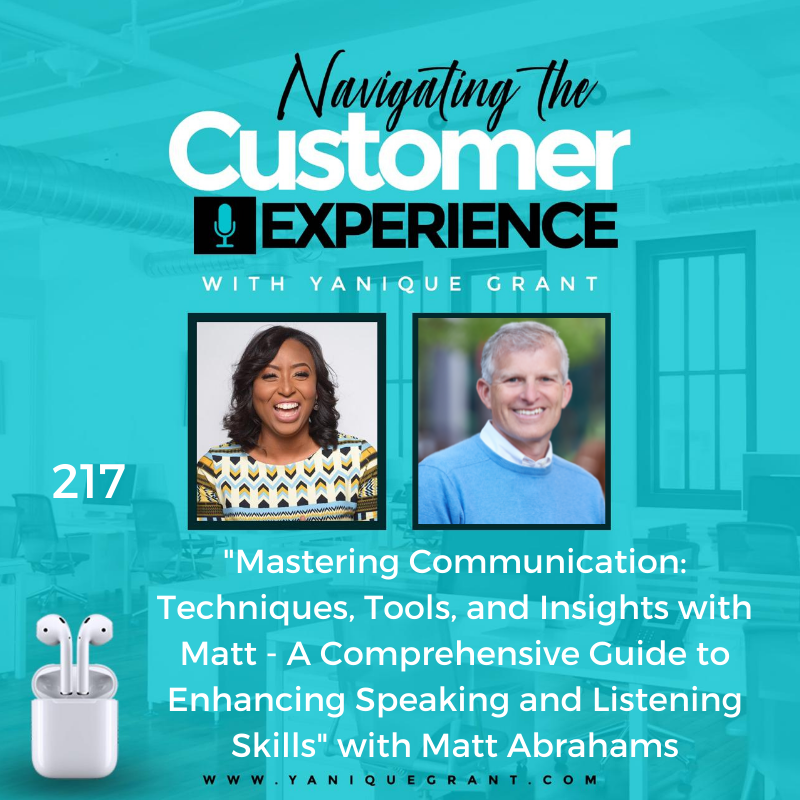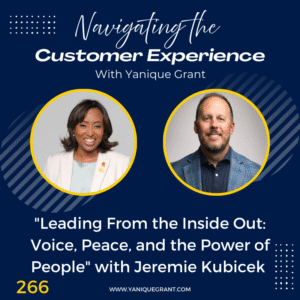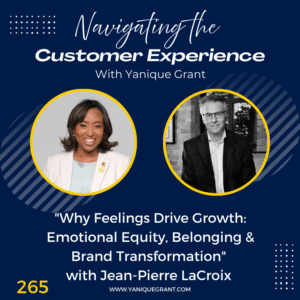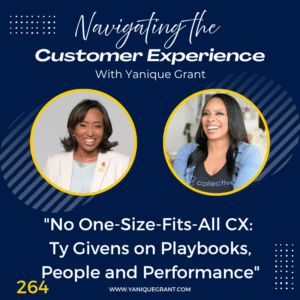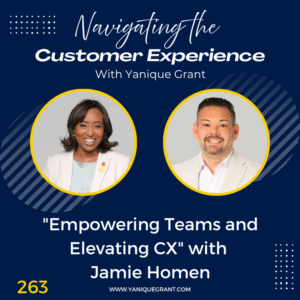Matt Abrahams is a leading expert in communication with decades of experience as an educator, author, podcast host and coach. As a Lecturer in Organisational Behaviour at Stanford University’s Graduate School of Business, he teaches popular classes in strategic communication and effective virtual presenting. He received Stanford GSB’s Alumni Teaching Award in recognition of his teaching students around the world.
When he isn’t teaching, Matt is a sought-after keynote speaker and communication consultant. He has helped countless presenters improve and hone their communication, including some who have delivered IPO road shows as well as TED, World Economic Forum, and Nobel Prize presentations.
His online talks garner millions of views and he hosts the popular award-winning podcast Think Fast, Talk Smart: The Podcast. He is the author of Think Faster, Talk Smarter: How to Speak Successfully When You’re Put on the Spot. His previous book, Speaking Up without Freaking Out: 50 Techniques for Confident and Compelling Presenting has helped thousands of people manage speaking anxiety and present more confidently and authentically.
Questions
• So, We always like to ask our guests in their own words, if you could share a little bit about your journey, how it is that you got to where you are today, in your own words.
• In Entrepreneurs Magazine, your article, it was called How to Sound Smart and Memorable Anytime. So, I would love for you to share with our listeners a little bit about the technique that you talk about in the article.
• Are there any other techniques that you encourage someone to practice in order to overcome that speaking anxiety?
• A big part of communication outside of speaking is listening, what has been your experience as a coach trying to help people to become better listeners?
• Can you share with our listeners what’s the one online resource, tool, website or app that you absolutely can’t live without in your business?
• We’d also like for you to share with our listeners, maybe one or two books that you’ve read, could be a book that you read recently, or even one you read a very long time ago, but the book has had a very big impact on you.
• Can you also share with our listeners what’s the one thing that’s going on in your life right now that you’re really excited about? Either something you’re working on to develop yourself or your people.
• Where can listeners find you online?
• Now, before we wrap our episodes up, Matt, we always like to ask our guests, do you have a quote or a saying that during times of adversity or challenge, you will tend to revert to this quote if for any reason you get derailed or you get off track, this quote kind of helps to get you back on track.
Highlights
Matt’s Journey
Matt shared that he’s somebody who has always been passionate and curious about communication. He remembers as a young child, being fascinated with how people communicate. In fact, one day, his mother decided it was important for him and his brother to have a yard sale, a garage sale because they had so much stuff, she was frustrated and wanted to get rid of it.
And where he grew up, there were lots of garage sales all over the place. And his mother specifically said, misspell the word garage on the signs that they were putting up and he was surprised by this advice. But they did and they inserted the letter “B” in the word garage. So, they had a garbage sale while everybody else had a garage sale. And they sold more stuff than anybody that weekend. And at that moment, he realised wow, the way you speak, the language you use, the words you use can influence people.
So, ever since then he’s been fascinated by it, he studied it in school in graduate school, he worked in the corporate world for over a decade and saw the impact of communication both good and bad. And to this day, he finds it fascinating and do a lot of work in the field.
Techniques Talked About in The Article from Entrepreneur’s Magazine – “How to Sound Smarter and Memorable Anytime“
Me: Now, I was lucky enough when travelling in October to purchase a copy of Entrepreneur Magazine. And I came upon your article, “How to Sound Smart and Memorable Anytime.” And I read the article and I was so intrigued, it caught my attention so much that I was like, “Oh my goodness, I have find this gentleman on LinkedIn and I have to invite him as guest on our podcast.” And so, I would just love for you to share the technique that you talked about in this article as it relates to communication and presenting and just share with our listeners a little bit about what that technique can do to improve on your presentations.
Matt shared that when it comes to communicating, especially communicating in the moment, it is critical that we are effective and we come off as confident, competent and clear. Many of us get very nervous when we have to speak in the moment and it can be very challenging for us. So, he has spent a lot of his last little bit of times trying to learn how to help people be better at speaking in the moment and that’s what his whole new book is about. It’s really about helping people feel better in the moment so that they can come off as confident and comfortable and help those better understand what it is they’re talking about.
So, the article that you’re referring to is really about one of the ways that we can go about sounding better and more intelligent when we speak, it’s leveraging a specific structure. So, what’s critical in our communication is that we package the information up in a way that is readily digestible by our audience. Many of us when we communicate spontaneously just itemize information, we share what we’re thinking as we’re thinking it. And that’s not how people process information.
He talked to many neuroscientists and they say our brains are wired for story, something that has a beginning, a middle and an end, logical connections of ideas.
So, in the article and one of the things he teaches a lot is how do you put structure to communication? And he talked about one of his favourite structures, it’s three questions. What?, So, what? Now, What?
What is the idea you’re talking about? It’s your product, your service, your offering your update, your feedback, it is the what?
So, what is why is it important and relevant to your audience? We have known for decades that content that is relevant and salient for an audience is what they pay attention to.
And then finally, now, what is what comes next? Maybe it’s do you have questions for me, or let me show you a demonstration, or let’s set up another meeting.
So, by simply following the structure, What, So, what, Now, what, answering those questions, you can package up your information nicely. In fact, he just used that structure to help explain the structure. He told you what it was, why it’s important, and how you can use it. So, that article, and a lot of what he does is really about helping people learn different structures for different speaking situations.
Me: Amazing. And you also had some other structures that you mentioned in the article where you spoke about:
· Problem, Solution, Benefit
· Point, Reason, Example point
· Comparison, Contrast, Conclusion
· Situation, Task, Action and Result
Could you just elaborate, maybe about 10 to 20 seconds on each for those just for our listeners, as well?
Matt shared that when it comes to speaking in the moment, there lots of different types of circumstances and situations that we find ourselves in. And different structures apply for different situations. So, when you’re selling something, trying to persuade somebody of something, a very useful structure is problem, solution, benefit.
Many of us have found ourselves in circumstances where we need to persuade, so you articulate the problem, challenge or issue, you then explain your suggestion for how we go about solving it. And then you explain the benefits of doing so. So, that can be a very useful structure. In fact, any television advertisement you’ve ever seen has been in that structure.
There are other structures as well. In the article, he talked about another one, he recommends that people use a lot, which is comparison, contrast, conclusion, you compare two items together or three, or four. And then you talk about how they’re different, that’s the contrast. And then you give your conclusion. There are myriad structures out there, people are familiar with some, others not so familiar with. But the idea is to have a toolkit of structures that you can leverage to help you in those moments where you’re struggling.
Techniques Encouraged to Practice in Order to Overcome Speaking Anxiety
Me: So, a big part of what you do as well, Matt is trying to help people get over the anxiety of presenting in front of a lot of people confidently, and I know structure, the methodology of the structure will definitely help you to have a little bit more focus, and you will have something in place versus just going up there and not knowing what to say. But are there any other techniques that you encourage someone to practice in order to overcome that speaking anxiety?
Matt shared that first and foremost, he doesn’t think you can overcome anxiety, he thinks we can become more comfortable with it, we can learn to manage it. But would we even want to overcome it, anxiety is actually helpful to us, it is something that helps us focus, it allows us to be sure that what we’re saying is important for ourselves and our audience, and it gives us energy. So, to him, it’s all about managing anxiety, not overcoming anxiety.
And when it comes to that there are lots of things that people can do, we can manage both symptoms, as well as sources, symptoms are the things that we physiologically experience. And then sources are the things that initiate and exacerbate our anxiety.
So, it’s important to attack both situations. So, symptoms are the things that we experienced, so many people get shaky, they feel their heart rate go up, so to help those with specific techniques, for example, deep belly breathing, you can breathe, take a slow inhale in and a longer exhale out and that will actually initiate a relaxation response that can help and it doesn’t take very much to actually have that take effect.
If you’re shaky that’s adrenaline trying to move you from threat towards safety and that means that we can do some movement in the beginning of a presentation stepping forward towards the audience, big broad gestures that gives the adrenaline a place to go and that way we can feel less anxious of our symptoms.
Now there are sources too, sources are the things that start our anxiety and continue it.
The biggest source of anxiety is people have a goal when they speak and it’s good to have a goal when you speak. But we’re afraid we won’t achieve our goal and if you think about it, that means we’re afraid that we won’t achieve a future outcome.
So, the way to short circuit goal based anxiety is to become present, be focused in the moment, focus on what you’re saying, focus on the audience and their needs, do something physical to get you in your body out of your head. These are all ways to manage the source of future thoughts.
So, there’s a lot we can do to manage anxiety, the very first book he wrote was called Speaking Up without Freaking Out, it’s a 50 techniques to help people feel better and more comfortable in the moment speaking. So, if we can manage our anxiety, we’re going to do much better when it comes to our mission.
Communication: Apart from Speaking, How to Become a Better Listener
Me: I believe a big part of communication outside of speaking, which I think the bigger part of communication that’s way more important than speaking is listening. What has been your experience as a coach trying to help people to become better listeners, sometimes you’re in a conversation, and I find that I have a challenge personally, with persons when I’m communicating, and they don’t give you a moment to express your thought fully, and they start talking in the middle of your sentence. So, you’re not even able to complete what you’re actually saying and how do you get to that point where you can be present in the moment when the person is speaking so you can take in all that they’re saying to you and process that information carefully, before actually making a response and get to the speaking part.
Matt shared that yes, listening is really important and many of us don’t do it well. In fact, he heard somebody say, “Listening is really just what we do when we’re waiting for our turn.”
You need to listen deeply, focused in a present oriented way to really not only show that you care about the person to connect, but also to understand what’s needed in the moment.
Giving an example. Imagine you and him come out of a meeting and you say to him, “Matt, what do you think?” And he says, “Oh, good, she wants feedback. Let me give it. Well, this work, this didn’t work, you could have done this better, we should have done this, etc.” But had he really listened, he might have noticed that your tone was a little quieter than usual. You came down to the back door instead of the front door, you were looking down when you asked him that question, what you really needed in that moment was not feedback, but it was support, and he missed the clues and cues. And he by jumping into giving you all this harsh feedback might have damaged the relationship.
So, we need to learn to listen well. How do you do that?
First and foremost, you listen for the bottom line, when we focus on what the person is saying in a deep way. What’s the bottom line, we listen with a much more focused intensity than how we normally do it, which is just the top line, just the gist, what are they saying. And then as soon as we hear it, we begin rehearsing and evaluating and judging and that works against us really understanding.
So, the way to become a better listener is to listen for the bottom line, to give yourself permission to pay attention not just to what they’re saying but how they’re saying it, context in which you’re saying it. This is hard work. Listening is challenging. He heard somebody once say, “You should listen until you sweat.” And he loves that idea, because it’s implying that listening is an active activity, something that we really need to focus on. So, he loves that Yanique brought up that question, and he hopes everybody listening takes time to listen better.
App, Website or Tool that Matt Absolutely Can’t Live Without in His Business
When asked about online resources that he can’t live without in his business, Matt shared that he gets a tonne of email and he uses a tool called Superhuman to help him parse through his email. It is an amazing tool, it has probably saved him 30%….40% of his email processing time. He loves the tool. He met the founder of the company a number of years ago, when he explained to him what he was working on, he fell in love with it instantly. And it is the tool he uses the most and it is the most helpful tool to him.
Books that Have Had the Biggest Impact on Matt
When asked about books that have had an impact, Matt shared that beyond the books that he’s written, which has had a huge impact on him. He’s learned a lot in writing those two books Think Faster, Talk Smarter andSpeaking up Without Freaking Out.
There are two books that he recommends to everybody. The first book is called Improv Wisdom, Improv Wisdom: Don’t Prepare, Just Show Up by Patricia Ryan Madson. It is a very short book, but it is life changing. It has changed his life. It is a book that talks about the rules and ways that improvisation, improv can be applied to daily life. So, it’s not about being funny, it’s not about being up on a stage. It’s about how to live your life in a more present oriented, connected, spontaneous way. Fantastic book!
The other book is a book he recommends to anybody looking to get better at their communication. It is an older book, as is Improv Wisdom. It is called Made to Stick: Why Some Ideas Survive and Others Die by Dan and Chip Heath, Chip Heath actually is a colleague of his at Stanford’s Business School. It’s all about how to make your ideas stand out and stick in people’s minds in a world where there’s a lot of things pulling at our attention. They give a six step methodology much like he does in his new book, that’s all about how to make your ideas stick. He thinks everybody who wants to improve their communication, and they’re lives should check out both of those books.
What Matt is Really Excited About Now!
When asked about something that’s he’s excited about, Matt shared that he’s very, very excited about the podcast he host Think Fast, Talk Smart, he’s dedicating a lot of his time and resources to expanding and extending the communication best practices and tips that they share through experts. He believes it helps him become a better person, a better communicator and he certainly thinks it helps everybody. So, he’s excited in the new year to put a lot of effort into that.
Me: Perfect. Okay, thank you for sharing Matt. We’ll also have a link to Matt’s podcast in the episode show notes as well, for anyone that would like to tap into Matt’s podcast and gain some more insight on being a better communicator.
Where Can We Find Matt Online
LinkedIn – https://www.linkedin.com/in/maabrahams
Website – www.mattabrahams.com
Quote or Saying that During Times of Adversity Matt Uses
When asked about a quote or saying that he tends to revert to, Matt shared that it’s a quote that he heard first in a silly movie, a movie called Buckaroo Banzai. And then he says he’s showing his age, because it’s many, many, many years ago. He knows it didn’t come from this movie, but the quote is simple, “No matter where you go, there you are.”
And he often can live in the future, he can be worried and thinking about future consequences, what comes next. And he has learned that something that can help ground him is simply to come back to the present and say, no matter where you go, there you are, deal with what’s coming on in front of you and that’s how we get things moving forward. So, that’s one of his favourite quotes and one that helps him a lot.
Me: So, thank you so much, Matt, for taking time out of your very busy schedule, for hopping on this podcast and being so gracious in facilitating this interview when I reached out to you originally. I definitely have gotten your book, I’ve started reading it and I’ve definitely shared it. I think I’ve shared it with at least maybe two or three organizations that I’ve done training with between October and December when I was first introduced to you through that article, so I think you’re doing great work. And I really appreciate the time that you’ve taken to hop on our podcast and just share some great insights that I believe as customer experience practitioners that we can definitely use to enhance the service delivery that we have if we improve on our communication skills.
Please connect with us on Twitter @navigatingcx and also join our Private Facebook Community – Navigating the Customer Experience and listen to our FB Lives weekly with a new guest
Links
• Think Faster, Talk Smarter: How to Speak Successfully When You’re Put on the Spot by Matt Abrahams
• Improv Wisdom: Don’t Prepare, Just Show Up by Patricia Ryan Madson
• Made to Stick: Why Some Ideas Survive and Others Die by Chip Heath and Dan Heath
The ABC’s of a Fantastic Customer Experience
Grab the Freebie on Our Website – TOP 10 Online Business Resources for Small Business Owners
Do you want to pivot your online customer experience and build loyalty – get a copy of “The ABC’s of a Fantastic Customer Experience.”
The ABC’s of a Fantastic Customer Experience provides 26 easy to follow steps and techniques that helps your business to achieve success and build brand loyalty.
This Guide to Limitless, Happy and Loyal Customers will help you to strengthen your service delivery, enhance your knowledge and appreciation of the customer experience and provide tips and practical strategies that you can start implementing immediately!
This book will develop your customer service skills and sharpen your attention to detail when serving others.
Master your customer experience and develop those knock your socks off techniques that will lead to lifetime customers. Your customers will only want to work with your business and it will be your brand differentiator. It will lead to recruiters to seek you out by providing practical examples on how to deliver a winning customer service experience!

